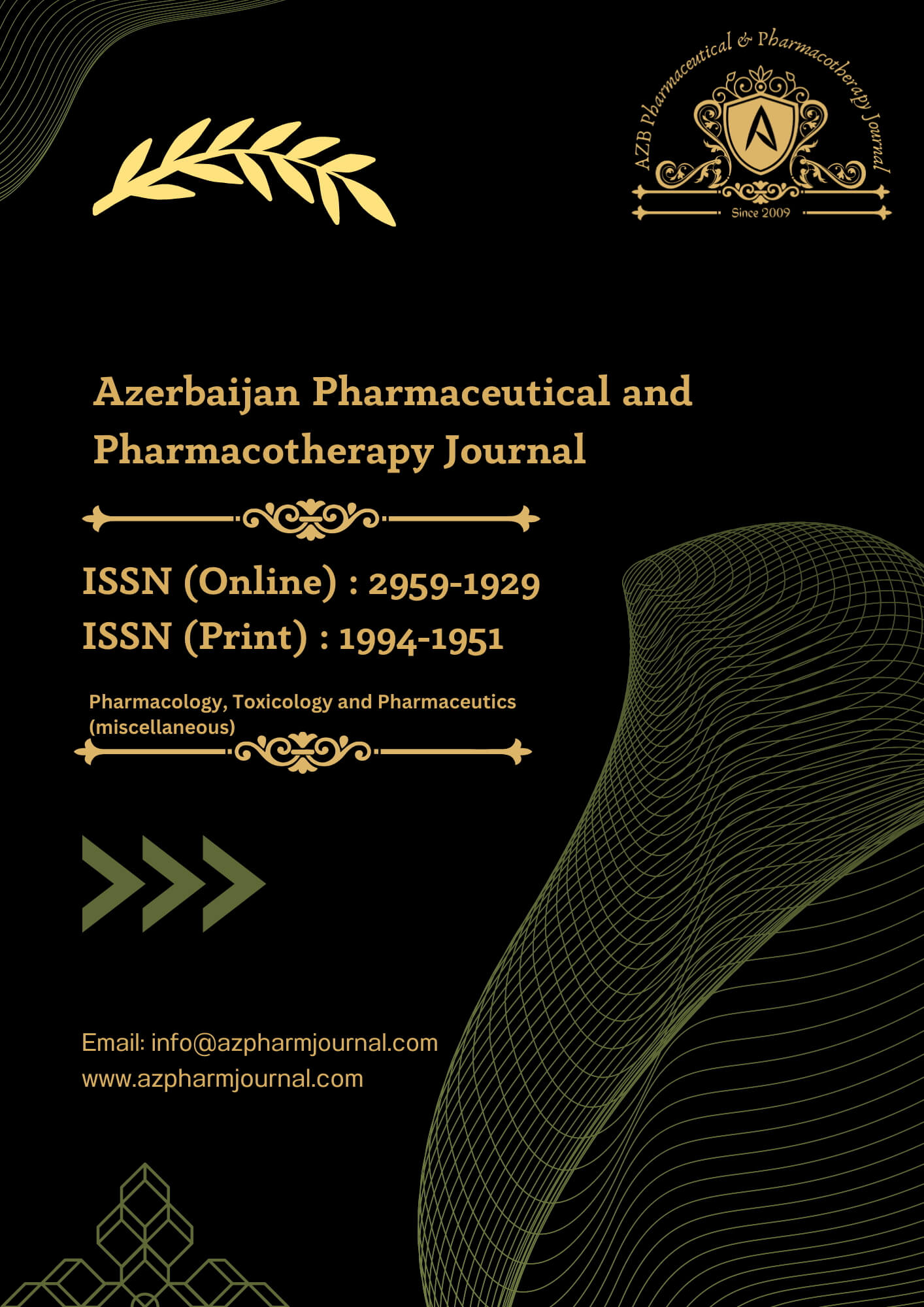The RMSD value, or root-mean-square deviation, is a measure of the similarity between the predicted and actual conformations of the ligand-receptor complex. A low RMSD value indicates a good fit between the ligand and receptor, and suggests that the docking protocol is valid. A commonly accepted threshold for RMSD in docking studies is 2 Å. [12]
In the case mentioned, the RMSD value of 1.42 indicates that the docking protocol used in the study is valid, and the predicted conformations of the ligand-receptor complexes are accurate. [12].
The ΔG score, as previously mentioned, is a measure of the thermodynamic favorability of the ligand-receptor interaction. A more negative ΔG score indicates a stronger interaction and higher binding affinity between the ligand and receptor. [12]
Table 4,5 and 6 shows the results of the molecular docking study, which reveal that Rosmarinic acid has the strongest inhibitory activity with a ΔG value of -8.4 kcal/mol, indicating high affinity towards target receptor acetylcholinesterase than with amyloid beta 42 with a ΔG value -6. The Ki value range from 6544 to 18036 which suggest high affinity towards the target receptor.
Hydrogen bonds, hydrophobic interactions, and electrostatic interactions are all important types of interactions that can contribute to the stability of a ligand-protein complex. Hydrogen bonds are formed when a hydrogen atom is shared between two electronegative atoms, such as oxygen or nitrogen. These bonds are relatively weak, but they can contribute significantly to the overall stability of a complex when multiple hydrogen bonds are formed. [12]
Hydrogen bonding also contributes to the affinity of the ligand to the protein/receptor due to the electrostatic interaction between the oxygen or nitrogen atom of the ligand and the hydrogen atom of the protein amino acid can be seen in Table 7 and figure 2,3 and 4 .
The study suggests that Rosmarinic acid with 4EY4 enhances the affinity of the compounds from Salvia officinalis target receptor, indicating greater activity against the target receptor than 2BEG and 1IYT.
Inhibitor reference ligand
When we studying the inhibitor reference ligand with in silico programs, the linkages between it and the protein (4EY4) .we have got 20% of amino acids (ARG525,LEU386). When we studying the inhibitor reference ligand with in silico programs, the linkages between it and the protein (2BEG) The interaction with inhibitor ligand almost the same with the interaction without it we have got 85% amino acid (MET A:35 , MET B:35, MET C:35 , GLY33, ILC31, GLY33). When we studying the inhibitor reference ligand with in silico programs, the linkages between it and the protein (1IYT) .The interaction with inhibitor ligand almost the same with the interaction without it we have got 78% amino acid ( GLN15, PHE19, VAL12).
Citicoline (active Principle) of (Pharmaceutical Syrup commercial drug )
When studying the active ingredient of Citicoline with in silico programs, the linkages between it and the protein (4EY4) are the following amino-acids we have ( GLN527 , ARG525, GLN525) In the other hand our ligand targeted 42.85 %. When studying the active ingredient of Citicoline with in silico programs, the linkages between it and the protein (2BEG) are the following amino-acids ( GLN15, PHE19, VAL12) In the other hand our ligand targeted targeted 75 %. When studying the active ingredient of Citicoline with in silico programs, the linkages between it and the protein (1IYT) are the following amino-acids (MET35) In the other hand our ligand targeted 20%.
Hotspot
We have structures of AChE (4EY4) and co-crystallized with different Compounds: The absence or presence of ligands affects the conformation of principal amino acids lining the gorge, e. g., Tyr337 and Tyr341 [173],. We have previously reported significant differences in estimated binding energies for the same compounds with these targets [174]. Here, we show that the target X-ray structure determines whether or not ligand poses reflect mixed-type inhibition.
The hotspot of (4EY4) is: LEU130, VAL132, SER462, ALA434, PRO446, TYR449, GLY323, ARG522,LEU386, VAL33 ,LYS332,ASP131,ARG463,HIS432,ARG463,THR436: results were confirmed by in silico programs, most powerful 4EY4 inhibitor is Rosmarinic acid, highlighting the presence of hydrogen interactions between oxygen and nitrogen atoms found in this inhibitor (our ligand inhibit 5 amino acids), carbonyl oxygen make bound with 4 amino acids: GLY323,ARG522, LEU386, VAL330 and structural nitrogen bound with LYS332 ,which is part of the enzyme active site.
The hotspots of this target (2BEG) are: PHE20, MET35, GLY33, MET35, ILE31.The results were confirmed in silico programs most powerful 2BEG the structures of Amyloid beta-40 (2BEG) different compounds: The presence of rosmarinic ligand effects the conformation of principal amino acids: MET35, GLY33.
The hotspots of this target (1IYT) are: ARG522, LYS332, ALA526, and GLY523.PHE19. We concluded that there are amino acids that also contribute to protein (1IYT) different compound: ARG522, LYS332.
